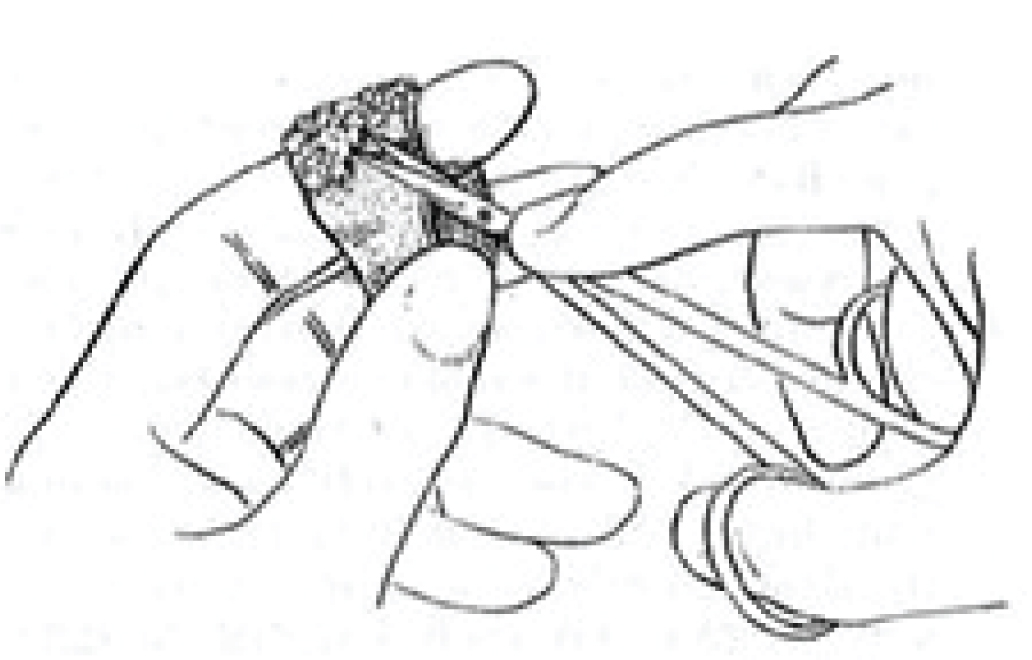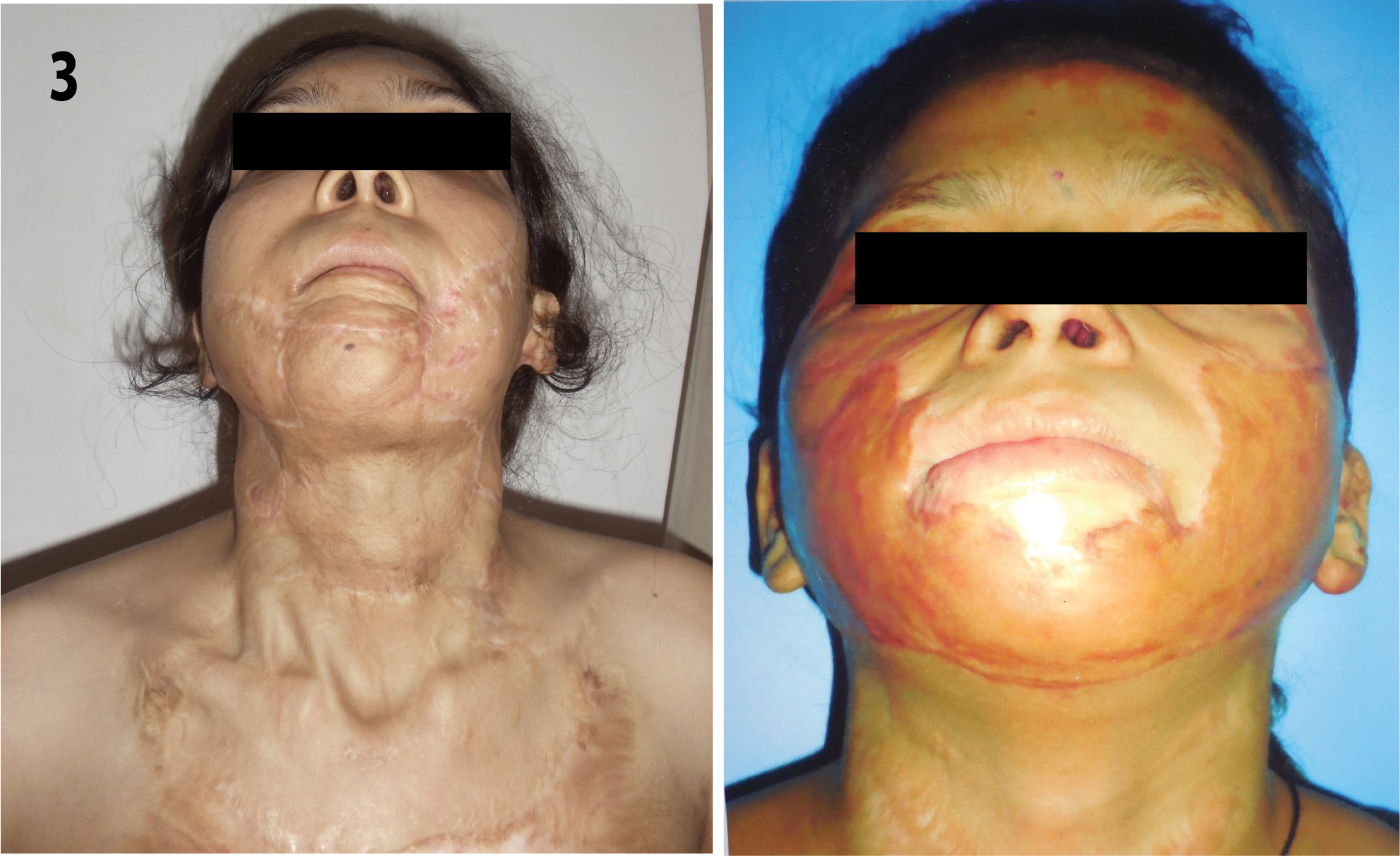A Novel Technique of Defattening Large Full Thickness Skin Grafts
Kapil S Agrawal1, Raghav Shrotriya2, Manoj Bachhav3, Mansi Pabari4
1 Additional Professor, Department of Plastic Surgery, KEM, Mumbai, India.
2 Resident, Department of Plastic Surgery, KEMH, Mumbai, India.
3 Resident, Department of Plastic Surgery, KEMH, Mumbai, India.
4 Resident, Department of Plastic Surgery, KEMH, Mumbai, India.
NAME, ADDRESS, E-MAIL ID OF THE CORRESPONDING AUTHOR: Dr. Kapil S. Agrawal, Additional Professor, Department of Plastic Surgery, Gynec, Wing, 2nd Floor, KEM Hospital, Parel, Mumbai-400012, India.
E-mail: drkapilps@gmail.com
Sir,
Full Thickness Skin Graft (FTSG) holds an irreplaceable position in a reconstructive and aesthetic surgeon’s armamentarium. Particularly for coverage of defects over face and hands, FTSG provides superior aesthetic and functional result as compared to the split thickness graft. FTSG is harvested free hand with a scalpel and invariably tends to include some of the underlying fat with it. Defattening of the graft is an important step to avoid fat necrosis [1] and to facilitate approximation of the dermis to wound bed which is essential for the revascularisation of the graft and eventually affects the ‘take’ [2].
Placing the skin graft under tension over a convex surface is a prerequisite for optimal defattening. As originally described in text [3] and as per the conventional teaching, the FTSG has always been defattened by stretching it upside down over the tip of surgeon’s index finger of non dominant hand while cutting with a sharp scissors [Table/Fig-1] [3]. This may at times lead to inadequate or irregular defattening, may also cause buttonholing and may be quite time consuming for large area grafts.
Conventional technique of defattening of FTSG

We have tried a novel way of defattening of a large FTSG by placing it over the dorsum of the non dominant hand of the assistant with dermal side facing upwards and defattening by using sharp scissors [Table/Fig-2a,b]. This technique has been particularly found useful for the large FTSG required for resurfacing of extensive facial post burn scars as the sheer size of the graft renders it unmanageable to defattening by conventional technique. Other advantages are that it is easier and faster and provides better outcome in terms of more uniform defattening of the FTSG and also prevents any inadvertent buttonholing of the precious graft. It is worth noting that this technique keeps both hands of the surgeon free to work.
Our technique for defattening of large grafts placing the graft on back of the assistant’s hand: a) relative position of surgeon and assistant; b) the way graft is held over back of the hand of assistant while fat is trimmed off

In our practice we cover large post burn scars over face and neck with large FTSGs harvested from lower abdomen with or without the use of tissue expansion. These grafts may sometimes be of dimensions upto 25 x 10 cm. As the surgery is being done for aesthetic effect, buttonholing and graft necrosis due to inadequate defattening is not acceptable. Defattening of such large grafts proves to be a challenge.
The authors have been using this technique routinely for the cases requiring large size full thickness grafts (in more than 100 patients till now) with excellent outcomes and never had complications associated with the conventional technique as discussed above [Table/Fig-3].
Cases of post burn scar over face resurfaced with large FTSG from lower abdomen

Thus we see that with this modified technique, one can defatten FTSG with precision in just few minutes and it makes the surgeon’s life easier while also giving a superior aesthetic result as compared to the conventional technique.
[1]. Carmen Fernández-Antón Martínez, Ricardo Suárez-Fernández, Full-Thickness Skin Grafts in Reconstructive Dermatologic Surgery of Nasal Defects, Skin Grafts- Indications, Applications and Current Research, Dr. Marcia Spear (Ed.) nTech 2011 :121 [Google Scholar]
[2]. Neligan PC, Plastic Surgery 2012 vol 1Elsevier:330Fig. 17.9 [Google Scholar]
[3]. McCarthy JG, Plastic Surgery 1990 vol 1PhiladelphiaW.B.Saunders:239 [Google Scholar]